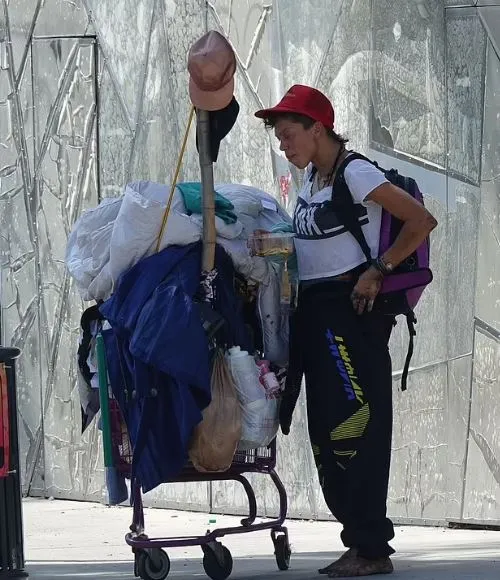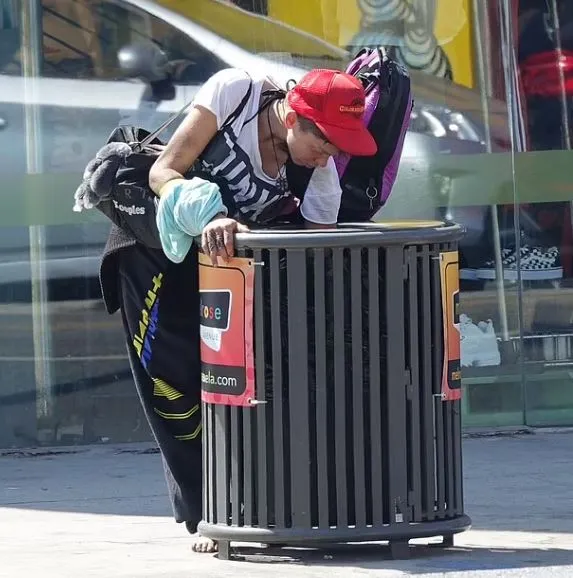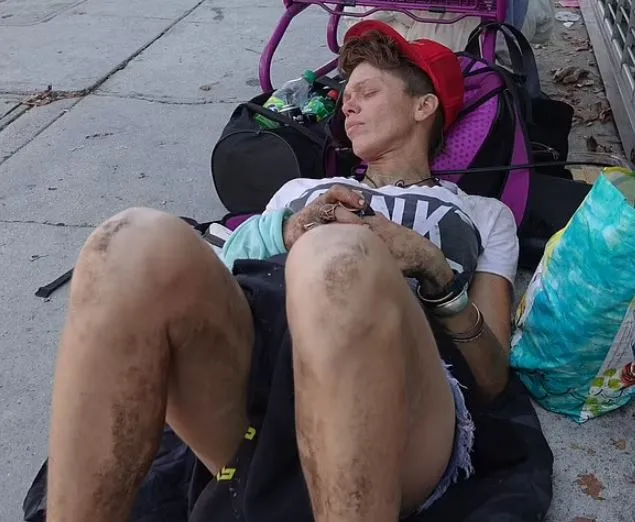Loni Willison’s life was once the epitome of glamour and success. A celebrated fitness model, she graced magazine covers and enjoyed a thriving career in the spotlight. But beneath the surface of her success lay the cracks of a devastating story that would ultimately lead her to homelessness on the streets of Los Angeles. Her journey from fame to survival is a sobering reminder of the power of mental health, addiction, and abuse to unravel even the most promising lives.
Loni Willison’s Rise to Fame as a Fitness Model

Born on May 21, 1983, in Hemet, California, Loni Willison quickly ascended to fame in the world of fitness modeling. Her striking physique, radiant smile, and dedication to her craft earned her a place in prominent publications like Glam Fit and Iron Man Magazine. She was not just a fitness model; she was an icon of health, beauty, and inspiration.
Her celebrity status soared even higher when she married Jeremy Jackson, known for his role as Hobie Buchannon on Baywatch. The pair tied the knot in December 2012, dazzling fans and media alike with their red-carpet appearances and seemingly perfect lifestyle. To the public, Loni and Jeremy represented the ultimate Hollywood power couple.
The Hidden Struggles Behind the Glamour
Behind the bright smiles and glitzy appearances, Loni and Jeremy’s relationship was anything but picture-perfect. The marriage became plagued with toxicity and abuse. Loni later opened up about the physical violence she endured, alleging that Jeremy attacked her, leaving her with broken ribs, scratches, and emotional scars.
By 2014, their tumultuous relationship came to a bitter end when Loni filed for divorce. The emotional toll of the abuse marked the beginning of her downward spiral. Meanwhile, Jeremy battled his own demons, struggling with addiction and facing legal troubles, including a jail sentence in 2015. Their shared struggles highlighted the fragility beneath their once-glamorous life.
A Descent into Darkness: Loni Willison’s Homelessness
Following her divorce, Loni’s life unraveled at an alarming pace. In 2016, she suffered a severe mental breakdown, marked by delusions that she was being electrocuted in her home. In an attempt to cope, she turned to crystal meth—a drug that quickly consumed her life.
Her deteriorating mental health led to the loss of her job at a cosmetic surgery center. With no income, Loni was evicted from her home and forced onto the streets. The fitness model who once graced the covers of magazines was now homeless, battling addiction and mental illness in plain view.
Life on the Streets: Loni’s Daily Struggle for Survival
Loni’s fall from grace became painfully evident in 2018 when haunting images of her scavenging through dumpsters surfaced online. Her once-glamorous appearance was almost unrecognizable. Her blonde hair, once a symbol of her beauty, was now gone, replaced by a rugged and unkempt look that told the story of her struggle.
In interviews, Loni described the harsh realities of life on the streets. She explained that she deliberately kept herself dirty to deter potential attackers, saying, “The dirtier I am, the better.” She also cut her own hair to avoid unwanted attention. Despite her dire circumstances, she claimed, “I have everything I need,” a statement that underscored her mental state and isolation.
However, her life on the streets was far from safe. Loni admitted to being robbed and attacked multiple times. Offers of help from friends, family, and even strangers were consistently rejected, as she believed she didn’t need assistance. Her refusal to accept help highlighted the isolating grip of her mental illness and addiction.

The Devastating Impact of Mental Health and Addiction
Loni Willison’s tragic journey is a stark reminder of the profound consequences of untreated mental health issues and substance abuse. Her descent was not just about losing her career or her home—it was about losing herself. Delusions, paranoia, and addiction created a vicious cycle that pushed her further from the life she once knew.
While Loni expressed moments of hope, such as a desire for a fresh start, her rejection of rehab and other forms of support demonstrated the immense challenges faced by those battling similar struggles. Her story is a testament to the complex interplay of trauma, mental illness, and addiction, and the difficulty of breaking free from their grip.
Lessons from Loni Willison’s Story

Loni’s journey from a celebrated fitness model to a homeless survivor carries powerful lessons that resonate far beyond her personal struggles. Her story highlights several critical issues:
- The Long-Lasting Effects of Abuse: The emotional scars of her abusive marriage didn’t heal when the relationship ended. Instead, they became a catalyst for her mental health decline and substance abuse.
- The Importance of Mental Health Care: Loni’s untreated mental illness played a significant role in her downfall. Her delusions and paranoia went unchecked, leading to devastating consequences.
- The Isolating Nature of Addiction: Addiction doesn’t just destroy lives—it isolates individuals from their support systems. Loni’s rejection of help from loved ones is a painful reflection of this reality.
A Glimpse of Hope
Despite her struggles, Loni’s story isn’t without moments of hope. In one interview, she expressed a desire to leave the streets and start a new life. These words, though fleeting, offered a glimmer of possibility—a reminder that recovery is never entirely out of reach.
However, the road to recovery for someone like Loni is complex and requires comprehensive support, understanding, and intervention. Her rejection of help underscores the need for more accessible mental health care and addiction treatment services tailored to meet individuals where they are.
Conclusion: A Cautionary Tale of Compassion and Awareness

Loni Willison’s fall from grace is both heartbreaking and eye-opening. Her story, from gracing magazine covers to surviving on the streets, is a sobering reminder of the devastating impact of abuse, mental illness, and addiction. It’s a cautionary tale that underscores the importance of mental health support, accessible treatment for addiction, and the need for compassionate intervention.
Behind every struggle is a human being fighting battles we may not fully understand. Loni’s story challenges us to approach such stories with empathy, to advocate for better mental health care, and to remember that no one is beyond help or hope. Let her journey inspire us to be more supportive of those silently fighting their own demons—and to recognize that every life is worth saving.


